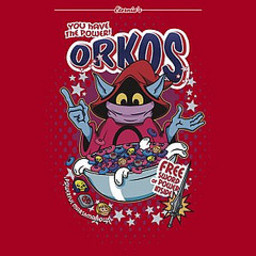The Great Serialization Experiment: Don’t Kill Your Reader – Eat a Cookie Instead

Remember, Kids: A Dead Reader Is A Non-Purchasing Reader
Here we are, last post of this series. Thanks for sticking around! Check out the first two parts if you haven’t yet: The Lay of the Land and Attack on Multiple Fronts.
The Mad Science
Ah, the eternal question: To plot ahead, or to write by the seat of your pants? I like to strike a healthy balance between planning and OMG WHY DID I THINK THAT CAPTURING MY NEIGHBOR’S PETUNIA GARDEN WOULD BE SIMPLE AND WHY DIDN’T I STUDY THEIR SQUIRREL DEFENSE GRID MORE THOROUGHLY FIRST??? I seriously still wonder about that one, as do my scars. I enjoy a combo of planning and flying by the seat of my squirrel-shredded pants is what I’m saying, in case that was a bit much on the cap locks.
This is what I did for Nigh, but I already had two published trilogies by the time I wrote it, so I had some idea of how I draft best (hint: very caffeinated). I didn’t have book 5 written when book 1 came out, but I had my plan. A thin little plan full of hunger and pain, but a plan nonetheless. I focused on arcs (skeleton) and promises (muscles and organs), and then tacked on the skin as I wrote.
The Skeleton(s)
If you mean to try doing a serial with one book coming out a month / every few months like I did, then be fair to your readers. Give them something that feels like a good bite out of the story and a complete scenario in an incomplete storyline. It helps sometimes to have a mission statement per book, which you can then use as building blocks to resolve some of that mission statement. Also, have an overall book arc, so the whole skeleton doesn’t feel disjointed and broken, because ouch.
Here’s what I had for Nigh:
FULL BOOK ARC: Faeries invade. People die. Lotsa people. This is Alva’s journey for survival, and to save her existing family while forming a new one out of the ruins of this world. (Come on – company mission statements would fair better if they were as dramatic. None of this “Have Happy Customers” mission statement shit. I want “CONQUER TIME AND SPACE ITSELF IN AN EFFORT TO SAVE OUR CUSTOMERS FROM EVEN THE MOST MINUTE OF BOTHERSOME CIRCUMSTANCES!” My caps lock keep getting stuck. It’s not me, it’s my enthusiasm.)
Then each book had its own mission statement:
NIGH 1 – What the heck is happening this is creepy shit.
NIGH 2 – Escape! Find safety!
NIGH 3 – Safety is not what we thought it would be / The Other World.
NIGH 4 – From apocalyptic to post-apocalyptic.
NIGH 5 – Reunion and end.
… there was a lot more, but I didn’t want to spoil the whole thing….

As I attacked each book, I knew what my main questions were and what I wanted to address. I also had a character arc to see who my main character would become and what story beats I needed to hit.
Having an arc for each book makes your reader feel like they’re getting a whole cookie in a multiple cookie snack, as opposed to a fifth of a cookie, which is never enough and makes you a bad host.
Promises
Next come the promises! Promises are the things you foreshadow. The things you let your readers imagine are coming, from a relationship to a death, and everything in between and beyond. They’re the seeds you sew while whispering to your reader “hey, I’m totally planting this idea in your head right now. Stick around to find out what happens, eh?” (I’m Canadian. We really do say “eh” all the time. Eh?)
Be aware of which promises you need to make in book 1 so that book 5 is more powerful, and also remember all of your promises so that you answer them. It’s the gun on the mantel thing all over again – if you bring in a gun, it better shoot a squirrel at some point… Okay, not necessarily a squirrel, but it should have a purpose. In a serialization, good promises will keep the reader coming back to buy the next book.
Cliffhangers
Of course, ending chapters on cliffhangers is *awesome* because it makes people stay up past their bedtimes, miss their bus stops and makes them waste away while they keep turning page after page until ultimately reaching their doom (which is why, by the way, long series writers should be arrested for attempted manslaughter. This is also why I only write trilogies.)
BUT, when you’re serializing a novel, you want to consider your reader when ending one piece of the book. After all, if they’re your front line, enthusiastic, reading the story as it’s being published (I call them my A Team and I cheer them on with pompoms on every release day), then they’ll have to wait a bit for the next part. Sure, leave them dangling from the cliff with a tenuous hold. But don’t stomp on their fingers until they fall off.
Throw them a cookie. I love a cliffhanger and have often received hate mail because of them (I <3 you too, Gary from Kentucky).

But I try to at least fulfill one promise, depending on the installment’s arc (see how it’s all coming together?). Give the reader a moment they’ve been waiting for. A holding of hands, breaking into the next world, jumping out of the frying pan with a chance it’s not into the fire (but who knows until the next book?) Not necessarily loosening the tension, but resolving at least one promise you’ve made to your reader.
Otherwise it’s like you push and push until they hit that wall, break their nose, and then you kick them while they’re down while screaming THE END THE END THE END THE END incessantly. Be the villain, sure. Don’t be a kicky and annoying villain though.
Refine it – read lots of cliffhangers out there and learn to do it right.
The trick I found to writing a serialized novel was really to see each part as individual products while also keeping track of the novel as a whole. When the omnibus comes out later this fall, and I collect all my happy cookies into one giant snack, it should feel cohesive and not jarring from book to book. It’s not a traditional three-act story because of the five-way break, but it definitely echoes it. I learned a lot while writing it just because it pushed my current storytelling boundaries, and allowed me to created something even more beautiful by challenging the usual form.
…now, if you’ll excuse me, I believe I’ll go have a snack.
Marie Bilodeau is a chocolate chip cookie lover, and an author and storyteller. She once ate a full batch of cookie dough and regrets it to this day. Find out more about the writing and storytelling parts at www.mariebilodeau.com. We don’t speak of the cookie dough incident anymore.